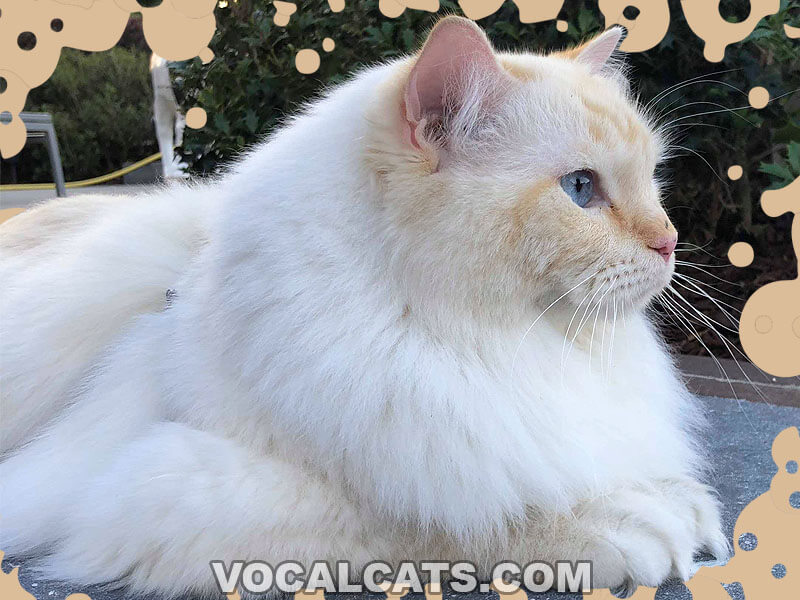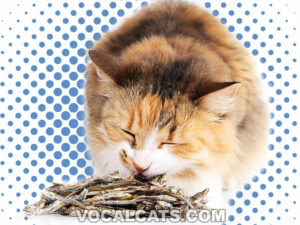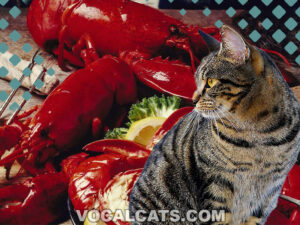There’s no shortage of colors and patterns when it comes to Ragdoll cats. And some feline lovers are simply curious about the Cream Point Ragdolls. Cream Ragdolls have the trademark cream or beige hues coloration in their extremities.
If you’re a prospective Cream Point Ragdoll owner who is looking for more information on this particular cream colored cat breed, we’re here to help. This comprehensive guide will shed light on everything you need to know about the Cream Ragdoll cat, from his genetics, personality, health issues, grooming requirements, dietary needs, and much more!
Cream Point Ragdolls are dilutes of the Flame Point Ragdoll, making them a little tricky to find. Still, that should not deter you from learning all there is to know about this beautiful color variation. Let’s begin with a brief overview of the Cream Ragdolls.
Contents
- Cream Point Ragdoll: Breed overview
- What is a Cream Point Ragdoll? What does “Cream Point” mean in Ragdolls?
- Are Cream Ragdolls rare?
- Cream Ragdoll genetics
- Cream Ragdoll cat physical appearance
- Are Cream Ragdolls born white?
- Do all Cream Ragdolls have blue eyes?
- Is Cream a recognized Ragdoll Cat color?
- Cream Point vs Flame Point Ragdoll
- Various Cream Point Ragdoll cat colors and patterns
- Cream colored Ragdoll cat size, height, and weight
- Cream Ragdoll personality and temperament
- Cream Ragdoll cat training
- Cream Ragdolls exercise requirement
- Cream Ragdoll grooming and cleaning
- Cream Point Ragdoll food and diet
- Cream Point Ragdoll health issues
- Cream Point Ragdoll lifespan
- Cream Point Ragdoll breeder
- Cream Point Ragdoll kitten
- Cream Point Ragdoll price
- Places to find Cream Ragdoll kittens for sale
- Cream Point Ragdoll: Pros and Cons
- Is the Cream Point Ragdoll right for me?
Cream Point Ragdoll: Breed overview
If you’re looking for a quick review of the Cream colorPoint Ragdoll variation, this is the section for you. We’ve provided a list of relevant details and some quick information regarding the Ragdoll cat Cream Point that you can glean on for reference.
| Common Names | Cream Point Ragdoll, Cream Ragdoll, Cream Ragdoll cat |
| Size | Large |
| Weight | 10-20 pounds |
| Height | 9-11 inches |
| Lifespan | 10-15 years |
| Colors | Ivory, light buff to pale pink cream points |
| Child Friendliness | High |
| Feline Friendliness | High |
| Training Difficulty | Low |
| Grooming Upkeep | Medium |
| Breed Health | Good |
| Exercise Needs | Low |
| Kitten Costs | $800-$4,000 |
What is a Cream Point Ragdoll? What does “Cream Point” mean in Ragdolls?
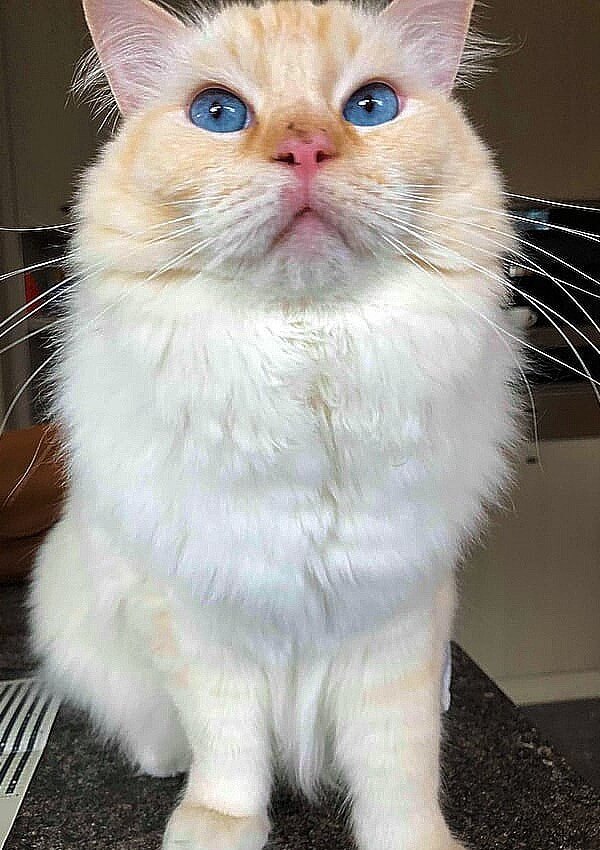
A Cream Point Ragdoll is a dilute of the Flame or Red Ragdoll cat. From a genetic perspective, that means two copies of a dilute allele will reproduce the required phenotype. Simply put, breeders will need two Cream Point Ragdoll parents for a pure Cream Point Ragdoll litter.
The Cat Fanciers’ Association (CFA) is the largest registry of pedigreed felines in the world. According to the CFA, the six recognized Ragdoll point colors are blue, seal, lilac, chocolate, cream, and red. And the association also describe Cream Point Ragdolls as having clear white bodies. If there is any shading, it has to match the color of the points.
RECOMMENDED: Seal Point Ragdoll (Complete Guide)
Their points (ears, snouts, face, paws, and tail) can range in hues from light buff to pale pink cream. The CFA prefers Cream Point Ragdoll felines with no barring or stripes. They also have blue eyes and flesh or pink-colored nose and paw pads.
Cream Points are available in colorpoint, bicolor, or mitted patterns. With the colorpoint variation, you can expect the cat’s mask, ears, paws, and tail to be a well-defined color. The nose and paw pads will correspond with the color of the points.
Bicolor felines display point coloration on the ears, tails, and mask areas. You can observe an inverted ‘V’ shape around the outer edges of the eyes and white spotting on the upper body. Their chins, chests, and undersides are also white.
Mitted Cream Points have a white blaze in the shape of a diamond, hourglass, or star placed between their foreheads and noses. The white fur starts at their chins and extends to their bellies. You’ll also notice white paws that look like mittens on their front legs and white fur on their hind legs (up to mid-thighs).
Like most Ragdolls, Cream Ragdoll are born white. Their color points don’t begin to show until they are at least ten (10) weeks old. Some felines can take longer to completely develop their coloration. For instance, some Cream Ragdoll cats may take up to two (2) to four (4) years of age to develop their Cream Point coloration.
Are Cream Ragdolls rare?
Yes, Cream Ragdolls are rare. Breeders and cat enthusiasts estimate that cream is the rarest of all Ragdoll colors. In fact, only 3 percent of cat owners in the US have Cream Ragdolls.
Chocolate, Flame Point, and Lilac Ragdoll are also pretty unique, as only 4 percent of cat owners boast that they have one of these rare colored Ragdolls.
Cream Ragdoll genetics
Understanding how Ragdoll Cream genetics work is important. That’s because you can look at the parents and predict the outcome of the litter’s physical appearance. As stated earlier, Cream Point Ragdolls are dilutes of the Red Ragdolls.
When it comes to genetics, the dilute gene is responsible for altering coat color from red to cream or black to grey. Dilution occurs due to a ‘single base deletion’ or a mutation in the MLPH or melanophilin gene.
DON’T MISS: Grey Ragdoll Cat (Complete Guide)
This gene is responsible for providing instructions for making melanophilin (a protein found in pigment-producing melanocytes). It’s also essential for transporting and distributing pigment granules or melanin.
Cats with dilution have normal melanin synthesis, but the melanin itself is deposited unevenly in the coat. This results in clusters of melanin in different sizes and areas lacking pigment, which gives the impression of light coat color.
The dilution gene is also recessive, meaning cats must have two copies of the gene from both parents for the necessary coloration.
The CFA states that male kittens inherit color genes from the mother, whereas females take one color gene from both parents. However, it’s highly recommended that both parents have the Cream Point genes to ensure the kittens have the dilution gene, as only a dilute cat (d/d) can pass on the gene to kittens.
Cream Ragdoll cat physical appearance
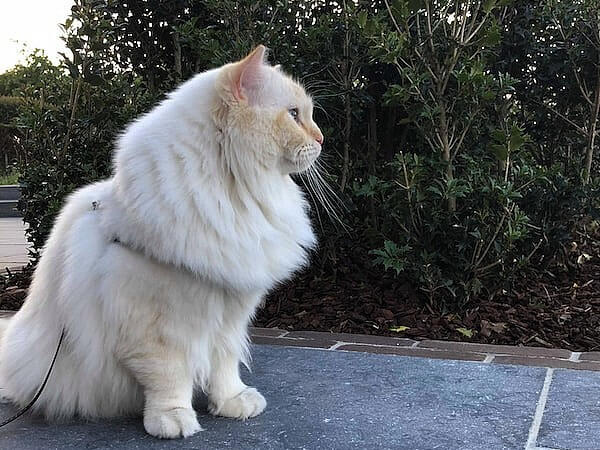
A Ragdoll Cream Point will generally have a pure white coat with shades of cream points in the extremities (face, ears, paws, and tail). The cream points can range in hues from light buff to pale pink cream.
Cream Points also have the trademark blue eyes of the Ragdoll cat breed. Their fur is somewhat longhaired.
These cats are medium to large in size and have wide-set ears that are moderately flared.
Their heads are proportionately large, with medium-length noses and strong chins. You can also expect the tails of Cream Point Ragdoll cat to be fluffy and long.
Are Cream Ragdolls born white?
Yes, Cream Ragdolls are born white. The kittens will only begin to show their actual coloration at ten weeks of age. However, it is also possible for your Cream Ragdoll kitties to develop their full coloration at two years of age.
You may be interested in: White Ragdoll Cat (Complete Guide)
Do all Cream Ragdolls have blue eyes?
Yes, all standard Ragdolls, including Creams, have blue eyes. Having blue eyes is necessary for a Ragdoll to be accepted as purebred, according to The International Cat Association (TICA).
However, here’s what is tricky, though. All Ragdoll kittens are born with blue eyes, no matter what coat color they are. If the eye color of the kitten remains blue at the three-month mark, you can be sure of his pedigree. However, if the blue eye color changes, then it is likely a cross or mixed breed.
Ragdolls with varying eye colors, such as Mink or Sepia Ragdolls, are not always recognized as purebreds, but this might not matter to many Ragdoll lovers. If you’re not planning on breeding purebred Ragdolls or showing your feline companions, then there’s really no need to worry about their eye color.
Otherwise, Cream Ragdolls with blue eyes and Cream Ragdolls without blue eyes will have similar temperament and beauty.
Interestingly, depending on the demand, cats with varying eye colors might be more or less expensive than purebreds.
You may also like: Blue Eyed White Ragdoll (Complete Guide)
Is Cream a recognized Ragdoll Cat color?
Yes, both The International Cat Association (TICA) and The Cat Fanciers’ Association (CFA) recognize Cream as one of six recognized Ragdoll colors. The other five include chocolate, lilac, blue, seal, and red.
Additionally, both TICA and CFA recognize colorpoint, bicolor, and mitted patterns of the Cream Point Ragdoll type.
DON’T MISS: Chocolate Pointed Ragdoll (Complete Guide)
Cream Point vs Flame Point Ragdoll
The main difference between Cream Point and Flame Point Ragdoll is that Cream Point is a much lighter shade between red and light brown while Flame Point Ragdoll is a brighter orange shade. Cat owners should also note that a Cream Point Ragdoll is a dilute of the Flame or Red Ragdoll.
What that means is that Cream colored Ragdoll cat carry a dilute gene (a type of mutation) that affects pigment distribution. This is what makes the cat’s fur look lighter than its flame point Ragdoll counterparts.
If one of the parents is missing the dilution gene, then it is possible that some (or all) of the kittens in the litter will not have the same coloration that Cream Points should have.
Various Cream Point Ragdoll cat colors and patterns
Thus far, we’ve focused on what Cream Ragdolls look like and how they get their distinct coloration. Now, it’s time to discuss what other patterns and shades the Cream Point Ragdoll comes in.
Here are some combinations you may run into with the Cream Point Ragdoll breed.
Cream Bicolor Ragdoll
A Cream bicolor Ragdoll cat is an appealing blend of the Cream Point colors and a bicolor pattern. These felines’ color points are confined to their masks, ears, saddle areas (lower backs), and tails. The point coloration can range from light brownish yellow to pale cream pink.
The mask of a Ragdoll Cream bicolor features a white inverted V within the outer edges of the eyes. You can also expect a Cream Point bicolor Ragdoll to have a white chest, chin, and underside. Other distinguishing marks include pink or flesh-colored paw pads and nose leather.
According to the judging standards of the CFA, if a Cream bi color Ragdoll is missing the distinctive inverted V-shaped mark on his forehead, then he is disqualified. Another disqualifying characteristic of the Cream bicolour Ragdoll is extensive dark coloration on the legs.
However, if you’re planning on adopting a Ragdoll bicolor Cream simply for the pleasure of his company, you don’t have to worry about his disqualifying features.
Cream Lynx Ragdoll
The Cream lynx Point Ragdoll is very similar to a Flame Lynx Point Ragdoll in looks. The main difference between the two is that a Cream Lynx has light orange and cream stripes on his cheeks, forehead, chin, and tail areas. Aside from that, they’re almost white or light cream all over. Their nose leather and paw pads are pale pink.
CHECK OUT: Ragdoll Tabby Mix (Complete Guide)
Blue Cream Point Ragdoll
A blue Cream Ragdoll has a white body with deep slate or lead grey points and cream mottling. The fur covering the body of a blue Cream Ragdoll cat is lighter in shade but can become somewhat mottled as the cat ages. The paw pads and the nose leather of these felines can be pink or grey in color, with or without mottling.
RELATED: Blue Point Ragdoll (Complete Guide)
Blue Cream Tortie Ragdoll
The coat color of a blue Cream tortie Point Ragdoll’s body can vary from a cold white to a silvery grey. However, the Blue Cream Tortie Ragdoll‘s underside (stomach and chest) is primarily white. This feline also sports dark grey-blue points with cream overtones and coral paw pads.
Blue Cream Lynx Point Ragdoll
The color of a Blue Cream Lynx Point Ragdoll can become a little messy or mottled with age.
Blue Cream Bicolor Ragdoll
The name Blue Cream Bicolor Ragdoll can be a little misleading for first-timers. These fuzzy companions don’t have much blue on them at all.
Instead, their bodies combine white and light silvery grey fur. Since they are bicolor, they typically have light grey fur on the top half of their face. They also have the unique V-shaped mark on their faces, leading to a white chin, chest, and underbelly.
RECOMMENDED: Blue Mitted Ragdoll (Complete Guide)
Blue Cream Tortie Bicolor Ragdoll
Blue Cream Tortie Bicolor Ragdolls have a blend of light blue and light cream colors on their bodies. Their bodies are typically a light silver grey with lighter underbellies. They also have dark-colored noses and paw pads.
Lilac Cream Ragdoll
A lilac Cream Point Ragdoll has a cold white body most of the time. Though some cats can carry mottling in frost or light grey hues. Their points are light silver with pale pink cream mottling. What’s unique about them is that their paw pads and nose leather color can vary from lavender to coral or flesh pink with mottling.
Lilac Cream lynx Point Ragdoll
The Lilac Cream lynx Point Ragdoll feature cold white on their bodies with different types of shading, including mottling or ghost striping. Their points are a frosty or light grey with pale pink-toned stripes against a light base coat color. Lilac Cream lynx Point Ragdoll also have pinkish lavender or pale pink nose leathers and paw pads. Their eyes are typically blue.
Cream Mink Ragdoll
Cream Mink Ragdolls look relatively similar to Cream Ragdolls. Their bodies are generally white with shadings in the same tones as their points. The fur on the extremities of these felines can be light pink or light buff.
The term ‘mink’ doesn’t relate to a color or pattern. Instead, mink highlights a specific bloodline of Ragdolls that traces its roots back to the very first Ragdoll.
Cream Mitted Ragdoll
Cream Mitted Ragdolls have well-defined color points around their ears, masks, tails, and legs. The color points can vary from pale pink or light yellow-beige. They can also sport a white blaze in the shape of an hourglass, diamond, or star between their forehead or nose leather.
Cream Mitten Ragdolls have white front paws that appears to look like mittens. And their hind paws is also white till the hocks. These felines also have white chins stretching to white stripes on their bellies.
Red Cream Ragdoll cat
Red Cream Ragdolls are similar to Cream Points in terms of points. The difference is that the color of the Red Cream Ragdolls appear somewhat saturated compared to the lighter Cream Point Ragdolls.
Cream colored Ragdoll cat size, height, and weight
Do you have questions about how big and tall a Cream Point Ragdoll can grow?
If yes, this section can give you a few quick pointers.
If you’re wondering why size considerations matter, it’s mainly because future feline owners are simply curious about how big they can expect their fluffy companions to grow.
So, without further ado, here are the size, height, and weight details of Cream Point Ragdolls.
| Height | Weight | Length | |
| Male | 9-11 inches | 15-20 pounds | 17-21 inches |
| Female | 9-10 inches | 10-15 pounds | 17-20 inches |
As we can see, a male Cream Point Ragdoll is generally larger and a bit heavier than a female Cream Point Ragdoll.
Cream Ragdoll personality and temperament
Ragdolls are sometimes described as dog-like cats and lap cats. As strange as that sounds, it is because these fuzzy companions have an affectionate and gentle nature. They love spending time with their human owners and family and even follow them around.
Another aspect that makes Cream Ragdolls the ideal family pet is that they get along spectacularly well with children of all ages and other pets in the house. They’re not aggressive, so you don’t have to stress about Ragdolls scratching anyone.
Also, Ragdolls are not very vocal and have a laid-back attitude about life.
Cream Ragdoll cat training
If you’ve been asking whether Ragdolls are easy to train, the answer is yes. Although, you should note that every feline has his or her own unique personality, which may impact how quickly he or she learns new tricks.
By and large, cat experts state that Cream Ragdolls and Ragdolls in general, are pretty easy to train when it comes to housetraining and walking on a leash.
Tricks like fetch can take a little longer and require cat parents to practice patience and perseverance.
It is best to start training your feline with the easiest and most important tricks first. For instance, using the litter. Once your fluffy companions learn that, you can focus on walking with a leash.
DON’T MISS: Cat Scratching Litter Box Excessively: 10 Reasons Why & What To Do!
Before you start training your Ragdoll, acclimate him to how a leash feels around his neck. Then you can introduce clickers and treats to get the desired results.
Cream Ragdolls exercise requirement
Felines don’t require much effort in terms of fitness. Most experts suggest 15 minutes of exercise (play time) daily for cats. What’s more, you can divide those 15 minutes into multiple segments throughout the day.
This will help keep your kittens interested in exercise. It is also an excellent way to bond with your Ragdoll.
You can use cat-friendly toys for this purpose, such as soft toys or interactive ones. Ragdoll cats aren’t big on climbing, so you might want to avoid ‘cat trees’ and instead opt for feather toys, tower tracks, and crinkle balls.
Cream Ragdoll grooming and cleaning
Cream Ragdolls have silky coats and plushy tails. They are long haired cats, so grooming is a must if you want to avoid shedding or hairballs.
Besides brushing, grooming your Ragdoll also includes bathing and eye and ear care. Ideally, you’ll want to brush your kitty cat’s teeth daily or at least 3 to 4 times a week.
However, we know this can be quite impossible especially if you have a busy schedule. Therefore, you can use dental chews to keep your feline friend’s gums healthy.
It is also a good idea to pay attention to their nails and trim them before they grow too long. If you don’t there could be scratches on your skin or your Ragdoll may start scratching your furniture. Therefore, it’s best to trim their nails at least every 2 weeks.
Here is a complete rundown of the Cream Ragdoll’s grooming needs:
| Grooming Technique | Frequency |
| Hair Brushing | 2x a week for 15 minutes. |
| Bathing | Once every 4-6 weeks. |
| Nail Trimming | Every 2 weeks. |
| Teeth Health | Brush 3-4x a week or give your feline good-quality dental chews once a day. |
| Eye Care | Gently wipe once a day to remove crust. |
| Ear Care | Wipe outer ears weekly. |
Cream Point Ragdoll food and diet
Felines are obligate carnivores, meaning they do best on a meat-based diet. Their bodies need large amounts of animal-based proteins and other essential vitamins and minerals to stay healthy.
If you want to keep your Cream Ragdoll in optimal health, we highly recommend that you consult with your veterinarian regarding the best food to give your little fur babies.
Generally, vets recommend dry foods for cats to avoid digestive and oral issues. However, since the dietary needs of Cream Ragdolls can vary according to age and health status, your vet might recommend a special diet.
Commercial food brands can also vary in ingredients based on the individual needs of a breed. For instance, breeds like Persians and Ragdolls with plenty of fur will need Omega 3 and 6 nutrients for coat health.
Cat owners should bear in mind that when changing food brands, it’s best to introduce the new food incrementally. Doing so will help keep your kitten’s digestive system cope with the diet change and dodge problems like diarrhea.
RECOMMENDED: Can Cats Eat Brussel Sprouts?
Cream Point Ragdoll health issues
All living things are prone to certain illnesses, and Ragdolls aren’t much different. Nonetheless, knowing what health issues your Cream Ragdoll may be prone to can help owners become more aware early on.
This means visiting the vet sooner than later so that health problems can be diagnosed early or living a healthier lifestyle to prevent these health issues.
Here are a few health conditions that Ragdolls are most susceptible to:
1. Inbreeding
We’ve highlighted how Ragdolls are bred carefully to specific colors and patterns. The problem with selective breeding, however, is that using the same gene pool over and over again can lead to genetic defects or weaker immunity.
Felines with weak immune systems are at greater risk of catching diseases and will have a difficult time fighting off infections without the help of medical intervention.
That is one of the reasons why Ragdoll breeders often give out three months or year-long health guarantees. This is to assure buyers that the cats come from a strong gene pool and don’t have compromised immunity or other health defects.
2. Urinary Tract Infections (UTI)
Ragdolls are prone to developing Urinary Tract Infections (UTIs) that can affect their ureters, urethras, bladders, or kidneys.
Symptoms of UTIs include pain while urinating, constant grooming, blood in urine, and incontinence to name a few. If you suspect your feline companion is suffering from urinary tract infection, we highly recommend that you bring him to the vet as soon as possible.
3. Obesity
Ragdolls are not high-energy cats. They have a laid-back temperament and are okay with spending their days lazing away. If you overlook their daily exercise needs, they may be at risk of developing obesity.
While the best cure for overweight Ragdolls is exercise, the treatment for obese cats will depend on how bulky they are. At times, your vet may recommend portioning your little furball’s diet to help him speed up weight loss.
The good news is that you do not need to figure out the right amount of portion for your four-legged friends all on your own. You can reach out to your vet or any veterinary professional. They will help you figure out the best portion for your Ragdoll so he can lose weight safely and in a healthy manner.
4. Hairballs
Cats are pretty efficient at grooming themselves. You’ll often notice your Ragdoll licking his fur to keep them clean. However, for moderate to long hair cats, licking the coat can also mean swallowing a fair amount of hair.
If your feline is unable to throw up the hair that was collected in his digestive system, it can lead to problems like lethargy, vomiting, and general malaise.
That’s why it’s essential to keep up with your feline companion’s grooming schedule to ensure he doesn’t swallow more hair than he needs to.
Cream Point Ragdoll lifespan
Cream Point Ragdolls have an average life expectancy of 10 to 15 years. The oldest Ragdoll on record lived up to 32 years! Regarding a cat’s lifespan, feline lovers should note that these numbers take a few things for granted.
For instance, factors like the absence of disease, quality of life, or quality of care can affect how long your furry friends may live. If you provide your Ragdoll with a high-quality diet and keep up with his veterinary appointments, then there’s no reason why your fluffy friend won’t live a long and healthy life.
Cream Point Ragdoll breeder
Experts recommend buying your Cream Point Ragdoll from reputable and ethical breeders instead of from pet stores because there’s a better chance of getting a healthier cat.
Responsible breeders will typically have vaccinated kittens that grow up around the breeder’s family and have space to play. In this way, they are properly socialized and housetrained.
Breeders also adhere to breeding and housing standards for felines, which means the cats grow up in a healthy environment with little to no exposure to severe illnesses.
Finally, breeders also offer health guarantees with DNA reports that vouch for a feline’s overall health.
Cream Point Ragdoll kitten
Many feline enthusiasts prefer bringing home their Cream Point Ragdoll as kittens to increase the chances of bonding and so it is easier to train them. If you have similar plans, adopting or buying a Cream Ragdoll kitten at 12 to 14 weeks of age is best.
This will ensure the kitten has had plenty of time to spend with his mother and litter to pick up important developmental and life skills, such as grooming and socializing.
Separating a kitten from his mother before the three months can not only affect his social skills, training, and development but also can impact his health.
For that reason, look for Cream Ragdoll kittens that are at least three-months old which will ensure that he is ready to leave his mother and be with his forever family.
Cream Point Ragdoll price
The price of Cream Point Ragdolls can range from $800 to $2,000, depending on their pedigree. Show-quality Cream Point Ragdolls can start from $2,500 to $4,000.
It’s also important to note that prices can vary between breeders and different states.
The Cream bicolor Ragdoll price range can be pretty similar to Cream Point Ragdolls, seeing as how there is only a difference in patterns between the two.
Still, Cream bicolor Ragdoll cost might be slightly higher than Cream Point Ragdolls as they are somewhat rarer and require two purebred parents. Cream bicolor seems to more expensive in Australia and the United States due to popularity and high demand.
Places to find Cream Ragdoll kittens for sale
If you’re searching for Cream Point Ragdoll kittens for sale and are interested in reputable breeders, then this section is for you. We’ve compiled a list of four breeders that can serve as your starting point.
1. Angel Girl Ragdolls
If you’re interested in Cream bicolor Ragdoll kittens for sale, start by looking at Angel Girl Ragdolls (angelgirlragdolls.com/available-kittens). Their cattery is located in the Washington D.C. metro area near the Nation’s Capitol. So if you’re in Virginia, Maryland, Washington DC or in the East Coat area, feel free to contact the breeder.
What’s great about this breeder is that they offer hand delivery across the US and are willing to drive to meet you.
Best of all, they are CFA-certified and have distinction with TICA. Their breeding queens include show-winners, and all their kittens are tested for diseases like feline leukemia and feline immunodeficiency virus, among others.
2. Villaroyal Ragdolls
Based in New York, Villaroyal Ragdolls (ragdollcat.org/cream.html) has quite the reputation for their Cream Point kittens in colorpoint, mitted, and bicolor patterns.
Located just 40 miles east of Buffalo and 20 miles west of Rochester, this breeder offer spayed and neutered kittens (included in the price) that can be shipped to your doorstep in the US.
3. Familytime Rags
If you’re searching for Cream Point kittens in Oklahoma, try giving Familytime Rags (familytimerags.com/about-us.html) a try. Besides having a good collection of Ragdoll kittens (including Cream Ragdolls), this breeder offer 4-year health guarantees, age-appropriate vaccinations, and much more.
4. Jamila’s Ragdolls
Located in Smithville, Texas, the Jamila’s Ragdolls (jamilasragdolls.com) has a large selection of pedigreed Ragdolls including Cream Ragdoll kittens. If you’re in the Austin, Houston, or Dallas area, feel free to visit this breeder in person.
This TICA-registered cattery also serves states like California, Florida, and Louisiana and offer a pet nanny delivery service. All of their Ragdolls are purebred and are SBT registered with TICA.
Before bringing home your new Cream Ragdoll kitten, rest assured that your kitty is tested negative for FeLV and FIV. Also, all of their kittens are DNA-tested and tested negative for HCM, PKD, MPS VI and other genetic disorders.
Cream Point Ragdoll: Pros and Cons
If you’re still unsure whether the Ragdoll cat Cream is the best furry friend for you and your family, here’s a quick pros and cons list to help you make your final decision.
| Pros | Cons |
| Gentle temperament. | Initial sale price may not be suitable for all. |
| Loving companion. | Will require regular grooming and vet visits. |
| Easy to maintain. | Tends to shed. |
| Good with kids. | May be susceptible to certain health issues. |
| Safe around other pets. | May get clingy. |
| Wallet-friendly. | Best to keep indoors. |
Is the Cream Point Ragdoll right for me?
A Cream color Ragdoll can make a wonderful feline companion. These kitty cats are cuddly, affectionate, and extremely gentle. They’re not high-energy and won’t go running around the house. If you’re looking for a calm feline family member that will fit in well with your large family or existing pets, the Cream Ragdoll is an ideal choice.
On the flip side, if you think your schedule won’t allow you to look after a Cream Ragdoll’s grooming and exercise needs, it may be better to choose a cat that doesn’t have such requirements.
DISCLAIMER: THIS WEBSITE DOES NOT PROVIDE MEDICAL ADVICE
The information, including but not limited to, text, graphics, images and other material contained on this website are for informational purposes only. No material on this site is intended to be a substitute for professional veterinary advice, diagnosis, or treatment. Always seek the advice of your veterinarian or other qualified health care provider with any questions you may have regarding a medical condition.
Resources:
https://en.wikipedia.org/wiki/Ragdoll
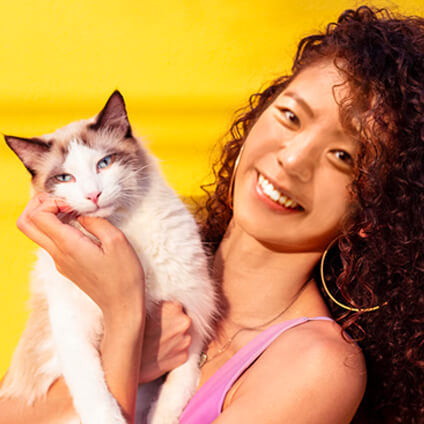
With over five years of specialized experience as an animal writer, my expertise lies in cat nutrition, health, behavior, grooming, and training. I am dedicated to delivering helpful and informative content that caters to the well-being of our feline friends. My primary goal is to empower pet owners with knowledge and ensure our feline companions thrive in health and happiness. In my free time, I love volunteering at local cat rescue centers.
